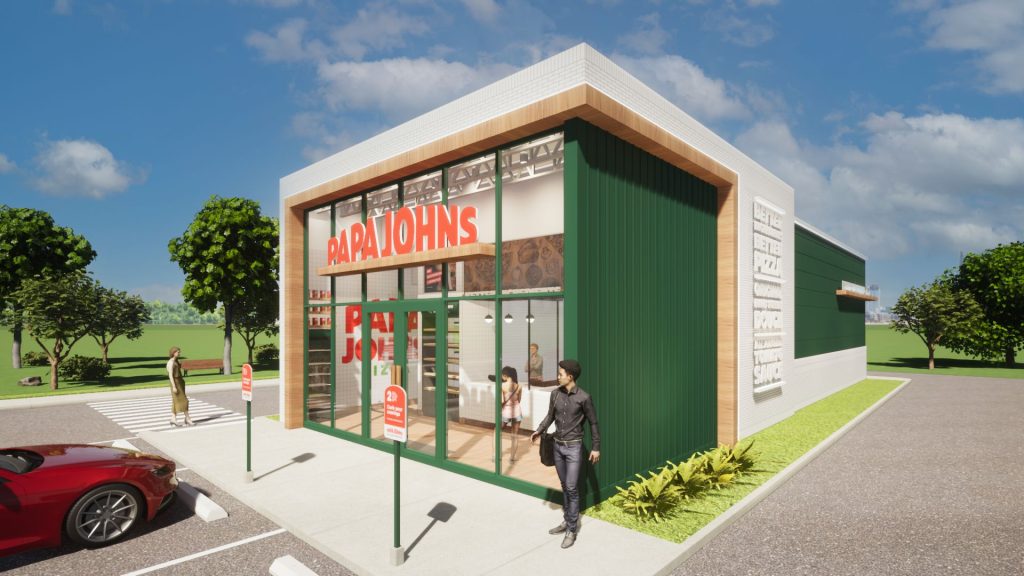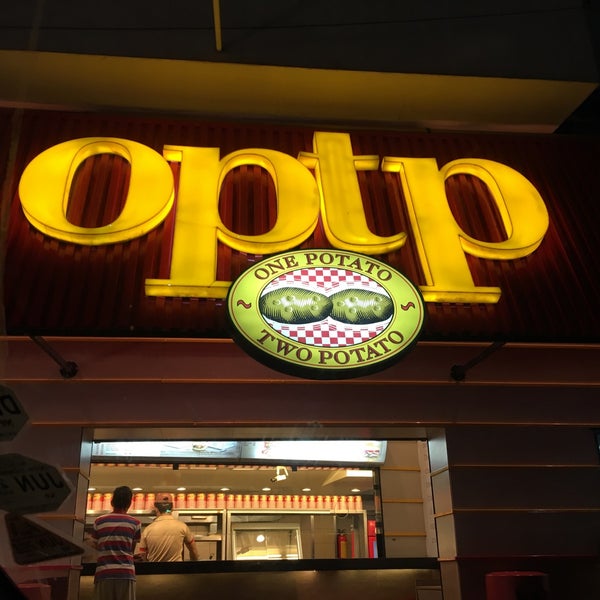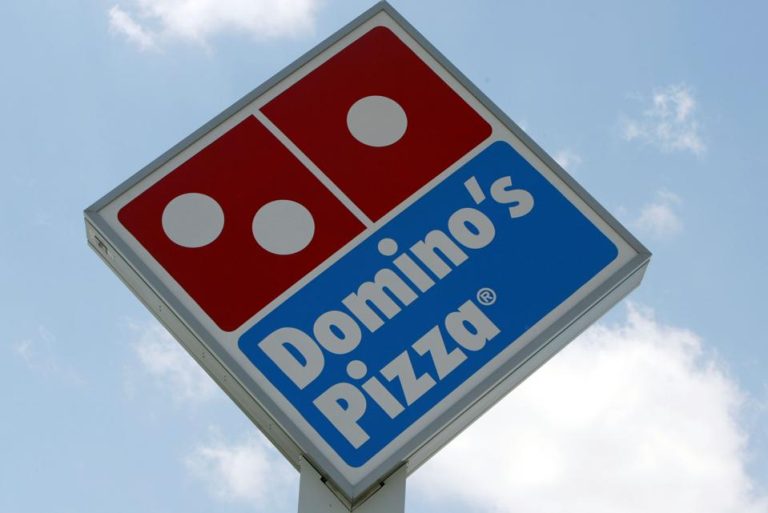Papa John’s-The Journey of a Pizza Empire
Introduction
Papa John’s International, Inc. is one of the world’s largest pizza chains, known for its commitment to quality ingredients and exceptional customer service. Since its inception, the company has grown from a single location to a global brand with thousands of stores. This article explores the history, business model, challenges, and future of Papa John’s, highlighting its impact on the fast-food industry. Also check out the history of OPTP and The Monal Restaurant.

The Birth of Papa John’s
The story of Papa John’s begins in 1984 in Jeffersonville, Indiana. John Schnatter, the founder, started the business in a converted broom closet in the back of his father’s tavern. He sold his beloved 1971 Camaro to purchase $1,600 worth of used pizza equipment. With a passion for making high-quality pizza, Schnatter’s venture quickly gained popularity.
The brand’s motto, “Better Ingredients. Better Pizza.”, was central to its identity from the start. Schnatter believed that using fresh dough, vine-ripened tomatoes, and high-quality meats and cheeses would set Papa John’s apart from its competitors.
Growth and Expansion
Papa John’s experienced rapid growth in its early years. By 1986, the company had opened its first franchise, and by the early 1990s, it had hundreds of locations across the United States. The company went public in 1993, further fueling its expansion.
One of the key strategies behind Papa John’s success was its focus on technology. The company was a pioneer in online ordering, launching its first online system in 2001. This innovation made it easier for customers to order pizza, contributing to increased sales and customer loyalty.
By 1997, Papa John’s had over 1,500 stores, and by 2003, the number had doubled. The company’s growth strategy involved not only expanding its footprint in the United States but also venturing into international markets. The combination of a strong franchise model and a focus on consistent quality helped the brand establish itself as a major player in the pizza industry.
Commitment to Quality
A significant factor in Papa John’s success has been its unwavering commitment to quality. The company adheres to strict standards for its ingredients. For instance, the dough is never frozen, and the tomato sauce is made from fresh, vine-ripened tomatoes. This dedication to quality has been a cornerstone of the brand’s marketing and has helped build a loyal customer base.
Papa John’s sources its ingredients from trusted suppliers who meet the company’s stringent quality standards. The cheese used in its pizzas is made from 100% mozzarella and is free from artificial flavors and preservatives. The meats, including pepperoni, sausage, and chicken, are made from premium cuts and are free from fillers.
The company also places a strong emphasis on food safety and hygiene. All Papa John’s stores follow rigorous food safety protocols, ensuring that customers receive fresh and safe products every time they order. This commitment to quality has earned Papa John’s numerous awards and accolades in the food industry.
Marketing and Brand Image
Papa John’s has invested heavily in marketing to build and maintain its brand image. The founder, John Schnatter, often appeared in advertisements, becoming the face of the company. The brand’s commercials emphasized the superior quality of its ingredients and the passion for making great pizza.
Sponsorships have also played a crucial role in Papa John’s marketing strategy. The company has sponsored major sports events and teams, including the NFL and various college sports teams. These partnerships have increased the brand’s visibility and helped attract a diverse customer base.
In addition to traditional advertising and sponsorships, Papa John’s has embraced digital marketing to reach a broader audience. The company’s social media presence is strong, with active accounts on platforms like Facebook, Twitter, and Instagram. Through these channels, Papa John’s engages with customers, shares promotional offers, and showcases new menu items.
The brand’s loyalty program, Papa Rewards, has been another successful marketing initiative. The program rewards customers with points for every purchase, which can be redeemed for free pizzas and other menu items. This has helped increase customer retention and encourages repeat business.
Challenges and Controversies
Despite its success, Papa John’s has faced several challenges and controversies over the years. One of the most significant was the public fallout involving John Schnatter. In 2017, Schnatter made controversial comments about the NFL’s handling of player protests, which led to backlash and his resignation as CEO. The situation escalated in 2018 when Schnatter used a racial slur during a conference call, resulting in his resignation as chairman.
These controversies had a negative impact on the company’s reputation and sales. To recover, Papa John’s took steps to rebrand and distance itself from Schnatter. The company brought in new leadership, including hiring former NBA star Shaquille O’Neal as a board member and brand ambassador. These efforts aimed to rebuild trust with customers and restore the company’s image.
In addition to leadership changes, Papa John’s undertook a comprehensive review of its policies and practices. The company implemented new diversity and inclusion initiatives, including unconscious bias training for employees and franchisees. Papa John’s also established a foundation to support charitable causes, demonstrating its commitment to social responsibility.
Adapting to Changing Market Conditions
The fast-food industry is highly competitive and constantly evolving. Papa John’s has had to adapt to changing market conditions to stay relevant. One significant shift has been the growing demand for healthier and more diverse menu options. In response, Papa John’s introduced gluten-free crusts, vegetarian options, and a variety of specialty pizzas.
The company has also embraced technology to improve the customer experience. The mobile app and loyalty program have made ordering more convenient and rewarding for customers. Additionally, the COVID-19 pandemic accelerated the adoption of contactless delivery and pickup options, which Papa John’s quickly implemented to ensure customer safety and convenience.
Papa John’s has also explored innovative ways to enhance its menu offerings. In 2020, the company launched “Papadias,” a cross between a pizza and a sandwich, which quickly became popular among customers. The introduction of limited-time offers and seasonal menu items has helped keep the menu fresh and exciting.
To stay ahead in the competitive landscape, Papa John’s continuously monitors market trends and customer preferences. The company invests in research and development to explore new product ideas and improve existing recipes. This proactive approach has helped Papa John’s maintain its position as a leader in the pizza industry.
The Role of Chefs in Papa John’s
At the heart of Papa John’s commitment to quality is its team of chefs and culinary experts. These professionals play a crucial role in developing new recipes, refining existing ones, and ensuring that every pizza meets the company’s high standards.
Papa John’s chefs are responsible for sourcing the best ingredients, from the ripest tomatoes for the sauce to the finest cuts of meat for the toppings. They work closely with suppliers to maintain consistency and quality across all stores. The chefs also experiment with new flavors and ingredients, keeping the menu innovative and appealing to a wide range of tastes.
Training is another critical aspect of the chefs’ role. Papa John’s invests in comprehensive training programs for its staff to ensure that every pizza is made to perfection. This includes teaching employees about proper dough handling, baking techniques, and ingredient selection. The goal is to deliver a consistent and high-quality product to customers, no matter which store they visit.
Cooking Skills and Specialties
The success of Papa John’s hinges on the cooking skills and specialties of its culinary team. The chefs at Papa John’s are not just pizza makers; they are artisans who bring creativity, precision, and passion to their craft. Here are some of the key cooking skills and specialties that define the Papa John’s culinary experience:
Dough Mastery: The foundation of a great pizza lies in its dough. Papa John’s chefs are trained to perfect the art of dough-making. The dough is made fresh daily, using high-quality flour and a proprietary recipe that ensures a perfect balance of texture and flavor. Chefs learn the techniques of kneading, proofing, and stretching the dough to achieve the ideal consistency and thickness.
Sauce Perfection: The tomato sauce used in Papa John’s pizzas is made from vine-ripened tomatoes, harvested at peak ripeness. Chefs are trained to prepare the sauce in small batches, ensuring a fresh and vibrant flavor. The balance of herbs and spices is crucial, and chefs take great care to maintain the consistency and taste that customers expect.
Cheese Selection and Melting: Papa John’s uses 100% mozzarella cheese, known for its creamy texture and excellent melting properties. Chefs are skilled in evenly distributing the cheese over the pizza to ensure a consistent melt and golden-brown finish. The cheese is shredded in-house to maintain freshness and quality.
Topping Artistry: One of the hallmarks of a Papa John’s pizza is its generous and high-quality toppings. Chefs are trained to select the finest meats, vegetables, and specialty toppings. They learn the art of layering and distributing toppings to ensure that every bite is flavorful and satisfying. Whether it’s the classic pepperoni or gourmet ingredients like fresh basil and sun-dried tomatoes, the focus is on quality and presentation.
Baking Techniques: The baking process is critical to achieving the perfect pizza. Papa John’s uses specially designed pizza ovens that provide consistent heat distribution. Chefs are trained to monitor baking times and temperatures closely. They learn to rotate pizzas and adjust oven settings to ensure a crispy crust and evenly cooked toppings. The result is a pizza that is both visually appealing and delicious.
Innovation and Creativity: While Papa John’s has a strong focus on its classic recipes, the chefs are encouraged to innovate and experiment with new flavors. This creativity has led to the introduction of popular menu items like the Papadias and specialty pizzas. Chefs stay updated with culinary trends and customer preferences, incorporating new ingredients and techniques to keep the menu exciting and relevant.
Food Safety and Hygiene: Ensuring food safety and hygiene is paramount in every Papa John’s kitchen. Chefs are trained in best practices for food handling, storage, and preparation. This includes maintaining proper temperatures for ingredients, using sanitized equipment, and following strict cleanliness protocols. The goal is to deliver a safe and high-quality product to customers every time.
Menu Innovations and Offerings
Papa John’s menu has evolved significantly over the years to cater to changing customer preferences and dietary needs. While the classic pizzas remain a staple, the company has introduced a variety of new items to keep the menu exciting and diverse.
Classic Pizzas: Papa John’s classic pizzas include popular options like Pepperoni, Sausage, and Cheese. These pizzas are made with fresh dough, signature sauce, and high-quality toppings. The focus on quality ingredients ensures that every slice is flavorful and satisfying.
Specialty Pizzas: To cater to more adventurous tastes, Papa John’s offers a range of specialty pizzas. These include options like The Works, which features a combination of meats and vegetables, and the BBQ Chicken Bacon, which combines chicken, bacon, and a tangy barbecue sauce. Specialty pizzas allow customers to enjoy unique flavor combinations and premium ingredients.
Papadias: Launched in 2020, Papadias are a fusion of pizza and sandwich. These handheld delights are available in various flavors, such as Italian, Meatball Pepperoni, and Grilled BBQ Chicken & Bacon. Papadias have been a hit with customers looking for a convenient and portable meal option.
Healthy and Dietary Options: In response to the growing demand for healthier and more diverse menu options, Papa John’s has introduced gluten-free crusts, vegetarian pizzas, and lower-calorie options. The gluten-free crust is made with ancient grains and offers a delicious alternative for customers with gluten sensitivities. Vegetarian pizzas feature fresh vegetables and plant-based toppings, catering to the increasing number of customers seeking meat-free options.
Limited-Time Offers and Seasonal Items: To keep the menu fresh and exciting, Papa John’s regularly introduces limited-time offers and seasonal items. These promotions often feature unique flavor combinations and premium ingredients, encouraging customers to try something new. Seasonal items, such as holiday-themed pizzas and desserts, add a festive touch to the menu and drive sales during peak times.
Environmental Initiatives
As environmental concerns become more prominent, Papa John’s is committed to reducing its environmental footprint and promoting sustainability. The company has implemented several initiatives to achieve this goal, focusing on reducing waste, sourcing sustainable ingredients, and improving energy efficiency.
Sustainable Packaging: Papa John’s is committed to using eco-friendly packaging for its products. The company has introduced recyclable and compostable packaging options to reduce the environmental impact of its takeout and delivery services. This includes pizza boxes made from sustainably sourced materials and packaging for sides and desserts that are biodegradable.
Reducing Food Waste: Papa John’s has implemented measures to minimize food waste across its operations. This includes optimizing inventory management to reduce excess stock and donating surplus food to local charities and food banks. By reducing food waste, the company not only helps the environment but also supports communities in need.
Energy Efficiency: Papa John’s is working to improve energy efficiency in its stores and supply chain. The company has invested in energy-efficient equipment, such as ovens and refrigeration units, to reduce energy consumption. Additionally, Papa John’s encourages its franchisees to adopt energy-saving practices, such as using LED lighting and implementing smart thermostat systems.
Sustainable Sourcing: The company is committed to sourcing ingredients from suppliers who prioritize sustainability and ethical practices. This includes working with farmers who use sustainable farming methods and suppliers who adhere to responsible fishing practices. Papa John’s also prioritizes suppliers who minimize their use of pesticides and antibiotics, ensuring that the ingredients are both high-quality and environmentally friendly.
Employee and Community Engagement: Papa John’s involves its employees and communities in its sustainability efforts. The company provides training and resources to help employees adopt eco-friendly practices both at work and in their personal lives. Additionally, Papa John’s partners with local organizations to promote environmental awareness and support community initiatives, such as tree planting and clean-up events.
Global Presence
Papa John’s has expanded its presence beyond the United States, with thousands of stores in over 45 countries. The company’s international growth strategy involves partnering with local franchisees who understand the regional market dynamics. This approach has allowed Papa John’s to tailor its menu and marketing strategies to suit local tastes and preferences.
Some of the key international markets for Papa John’s include the United Kingdom, China, India, and Latin America. Each of these markets presents unique opportunities and challenges, requiring the company to be flexible and innovative in its approach.
In the United Kingdom, Papa John’s has established a strong presence with over 400 stores. The brand’s focus on quality and customer service has resonated well with British consumers. In China, Papa John’s has adapted its menu to include locally inspired flavors and ingredients, catering to the diverse palate of Chinese customers.
India represents a significant growth opportunity for Papa John’s, given the country’s large and growing middle class. The company has introduced vegetarian options and other menu items that cater to local dietary preferences. In Latin America, Papa John’s has focused on expanding its footprint in countries like Mexico and Brazil, leveraging the region’s love for pizza.
Community Involvement
Corporate social responsibility is an important aspect of Papa John’s business philosophy. The company is involved in various charitable initiatives and community programs. For instance, Papa John’s has partnered with organizations like the Boys & Girls Clubs of America to support youth development and education.
In addition to corporate initiatives, individual franchisees often engage in local community activities. These efforts help build strong relationships with customers and reinforce the brand’s commitment to making a positive impact.
Papa John’s has also been active in disaster relief efforts. The company has provided food and financial support to communities affected by natural disasters, such as hurricanes and wildfires. These initiatives reflect Papa John’s dedication to giving back to the communities it serves.
In recent years, sustainability has become a key focus for Papa John’s community involvement efforts. The company is working to reduce its environmental footprint by implementing eco-friendly practices in its stores and supply chain. This includes initiatives like reducing food waste, using sustainable packaging, and sourcing ingredients from responsible suppliers.
The Future of Papa John’s
Looking ahead, Papa John’s faces both opportunities and challenges. The fast-food industry is evolving, with increasing competition from new and established brands. To stay ahead, Papa John’s will need to continue innovating and adapting to changing consumer preferences.
One area of focus will likely be sustainability. As environmental concerns become more prominent, customers are looking for brands that prioritize sustainability. Papa John’s can build on its commitment to quality by sourcing more sustainable ingredients and reducing its environmental footprint.
Another key area will be leveraging technology to enhance the customer experience. This includes expanding delivery options, improving the mobile app, and using data analytics to better understand customer preferences.
The rise of plant-based diets presents another growth opportunity for Papa John’s. The company has already introduced vegan cheese and plant-based toppings in some markets. Expanding these offerings can attract a broader customer base and cater to the growing demand for plant-based foods.
International expansion will continue to be a priority for Papa John’s. The company plans to enter new markets and strengthen its presence in existing ones. By partnering with experienced local franchisees, Papa John’s can navigate the complexities of different markets and deliver a consistent brand experience worldwide.
Innovation in menu offerings will also play a crucial role in Papa John’s future success. The company will need to continuously explore new flavors and products to keep customers engaged. Limited-time offers, seasonal promotions, and collaborations with popular brands can help drive excitement and increase sales.
Conclusion
Papa John’s has come a long way since its humble beginnings in a broom closet. The company’s commitment to quality, innovation, and community involvement has helped it become a global pizza powerhouse. Despite facing significant challenges and controversies, Papa John’s has shown resilience and adaptability.
As the fast-food industry continues to evolve, Papa John’s will need to stay true to its core values while embracing new opportunities. By focusing on quality, sustainability, and customer experience, Papa John’s can continue to thrive and maintain its position as a leader in the pizza industry.
Papa John’s success story is a testament to the power of vision, dedication, and a commitment to excellence. From a small startup to a global brand, Papa John’s journey is a source of inspiration for entrepreneurs and business leaders around the world. As the company looks to the future, it will undoubtedly continue to innovate and evolve, delivering “Better Ingredients. Better Pizza.” to customers worldwide






